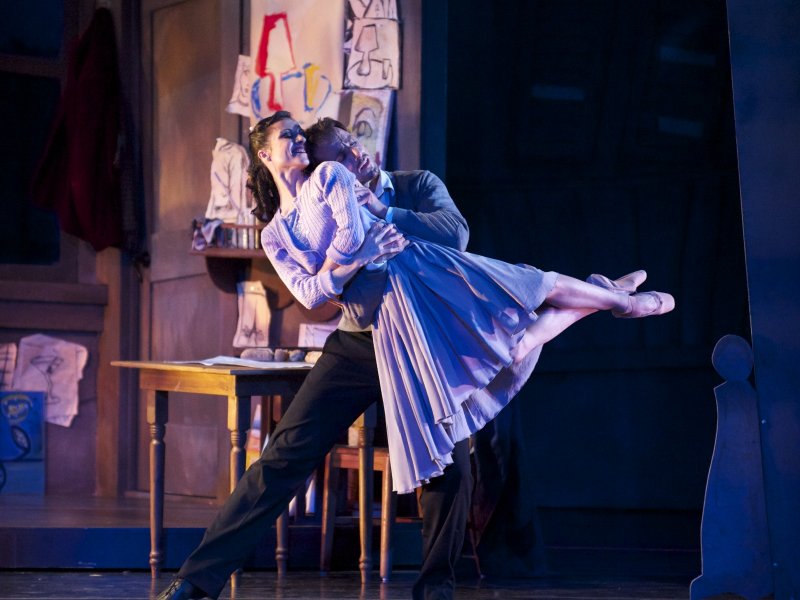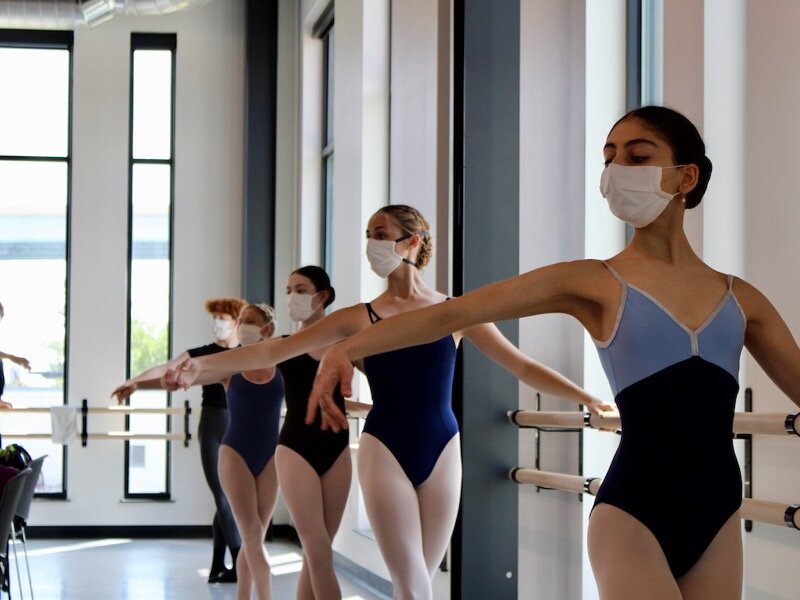Coco Chanel famously said that each time before leaving her house, a lady should look in the mirror and remove one piece of jewelry.
In other words, don’t gild the lily. Less is more.
Milwaukee Ballet artistic director Michael Pink clearly took this approach when creating his latest piece, "La Boheme," which premiered this evening at the Marcus Center for the Performing Arts. The three-act work shies away from excess in all its forms, instead stripping bare one of the world’s most famous love stories and showing ballet as it should be: chic, simple and clean.
Operatic works are so often weighed down by their own grandness that they cannot move. In contrast, Pink’s "La Boheme" is light, airy and youthful - both visually and theatrically. Puccini’s legendary tale of starving artists and doomed love is allowed to breathe and blossom by keeping the lens tightly focused on the foursome of Mimi, Rodolfo, Musetta and Marcello. The corps de ballet is used sparingly but appropriately for street and party scenes. Otherwise, it's a boldly unpopulated stage.
The two couples’ parallel choreography perfectly juxtaposes their different fates: Mimi and Rodolfo are emphatic in their movements and they have pas de deux that are sweetly affectionate and even adoring. They fawn over one another; Rodolfo supports Mimi and literally carries her through their scenes. In contrast, Musetta and Marcello’s interactions are rife with tension. They are the couple who has a more vigorous, life-filled romance – fittingly, since theirs is the relationship not complicated by terminal illness as Mimi and Rodolfo’s is.
The role of Musetta is danced by Cuban-born Annia Hidalgo. If "La Boheme" has one breakout star, Hidalgo is it. Her interpretation of Musetta is lusty and dynamic; her powerful, pointed movements made it impossible to watch anyone else while she was onstage. Costume designer Paul Daigle gave her a particularly compelling bateau-necklined cocktail dress during Act II and the audience gasped when it was revealed.
Pink moved the story forward about a hundred years to Paris in the 1950s, a bold decision that paid off. The atmosphere and style of the 1950s lends itself perfectly to the story’s purposes: in a way, it sets it free. Set designer Rick Graham’s set is magnificently versatile but appropriately drab – they do live in poverty, after all.
Milwaukee Ballet Orchestra conductor Andrew Sill gave an inspired arrangement of Puccini’s familiar music. The danger of adapting an opera for a non-verbal performance is, of course, that the music will eclipse everything. The score was lush but nevertheless outshone by the dancing – as it should be.
Everyone knows that Puccini prefers to end things with death and tears; it’s quite a task to keep an audience interested and invested for two hours when they know that heartbreak will be their reward – and it is, but Pink makes it a sweet one. He gives Mimi and Rodolfo (performed by Luz San Miguel and David Hovhannisyan) a farewell dance that is uncomplicated and utterly beautiful – as is their love.
Colleen Jurkiewicz is a Milwaukee native with a degree in English from the University of Wisconsin-Milwaukee, and she loves having a job where she learns something new about the Cream City every day. Her previous incarnations have included stints as a waitress, a barista, a writing tutor, a medical transcriptionist, a freelance journalist, and now this lovely gig at the best online magazine in Milwaukee.







